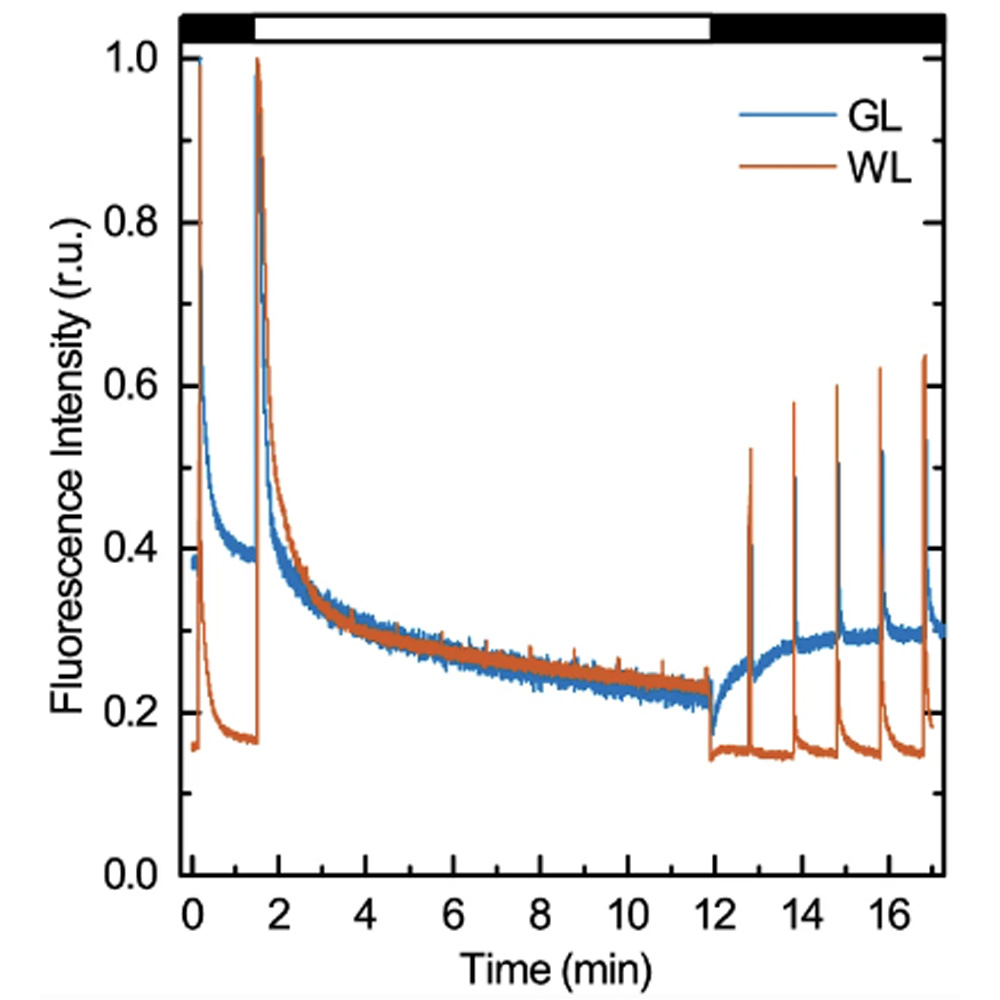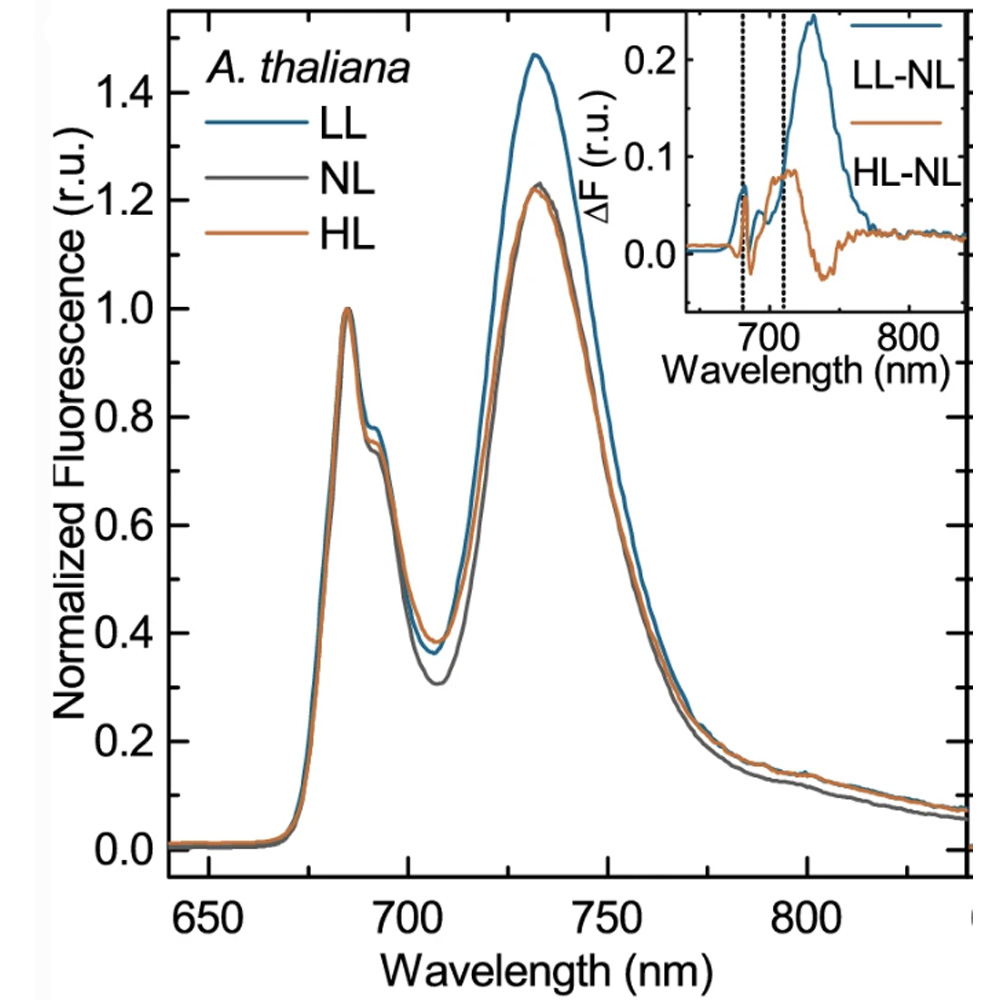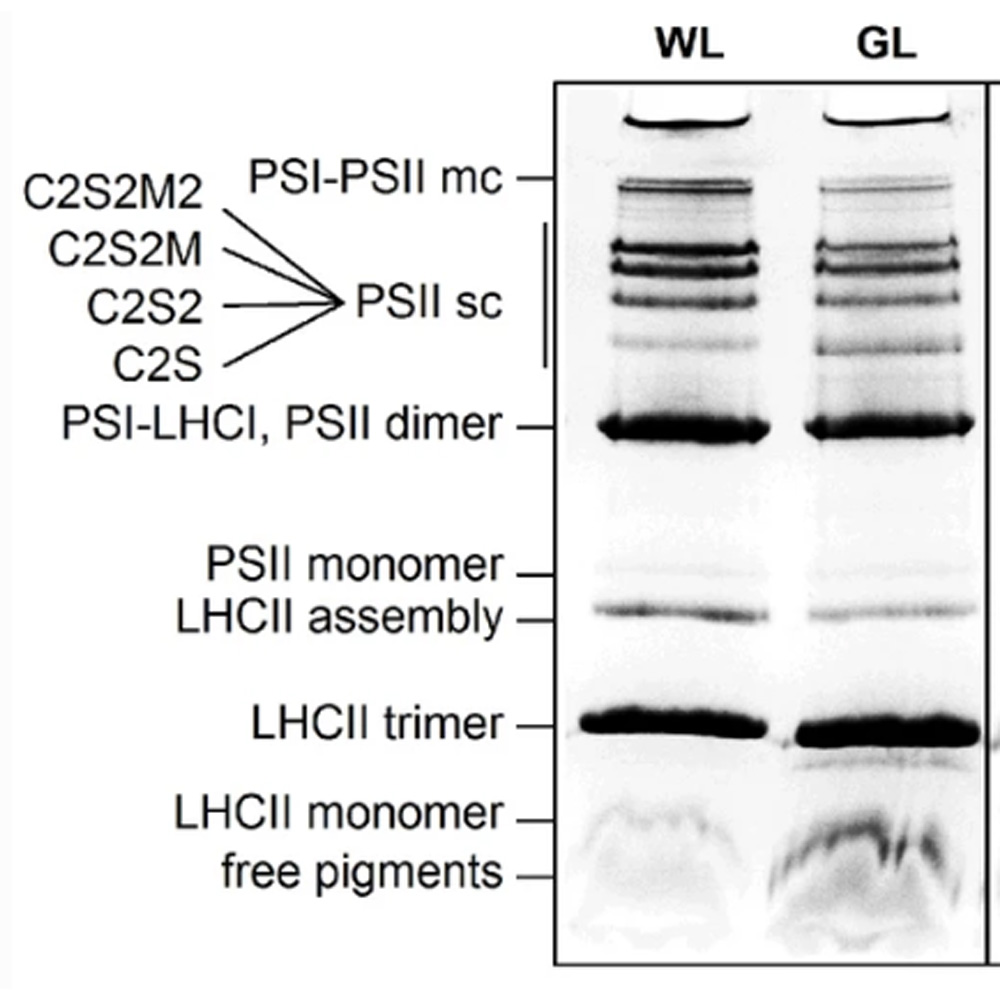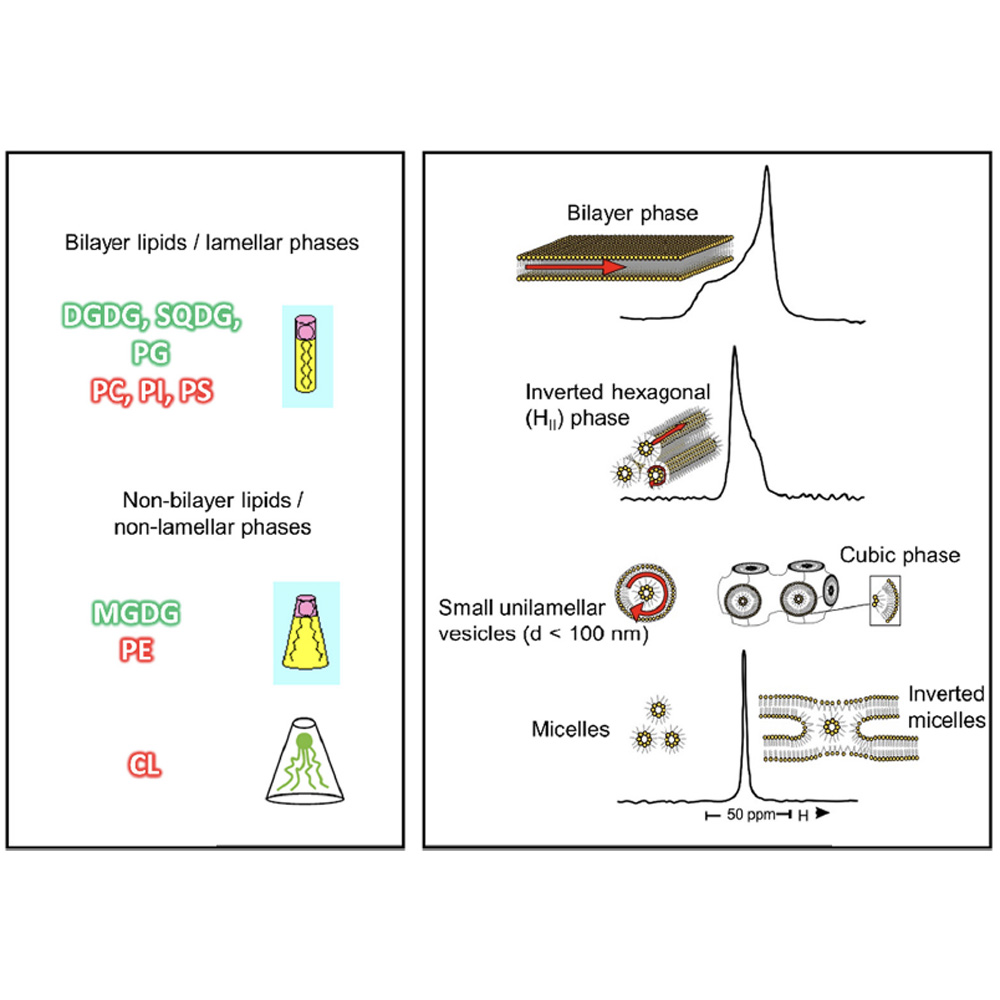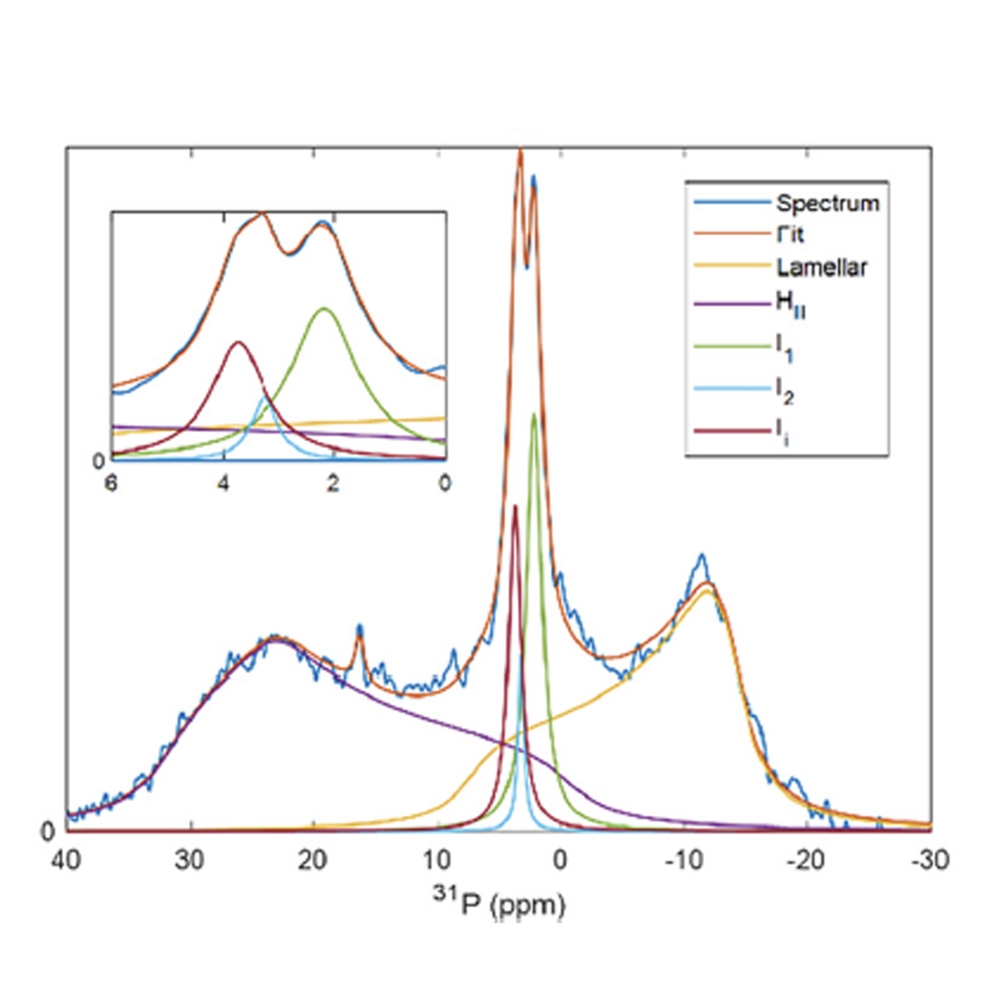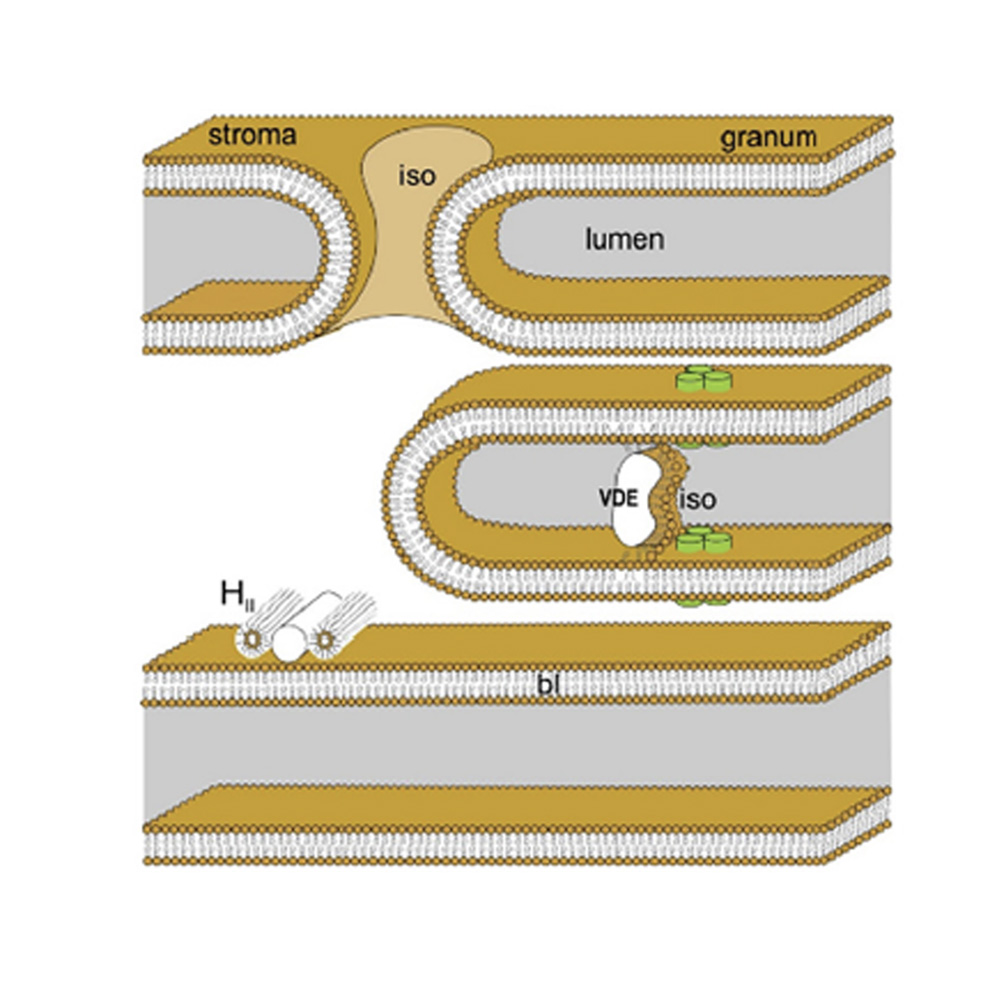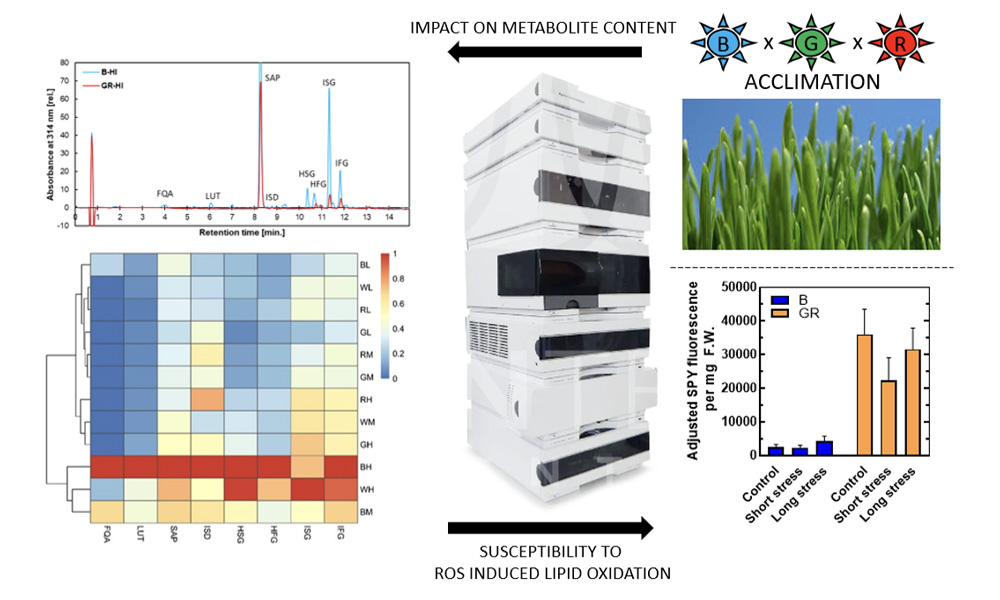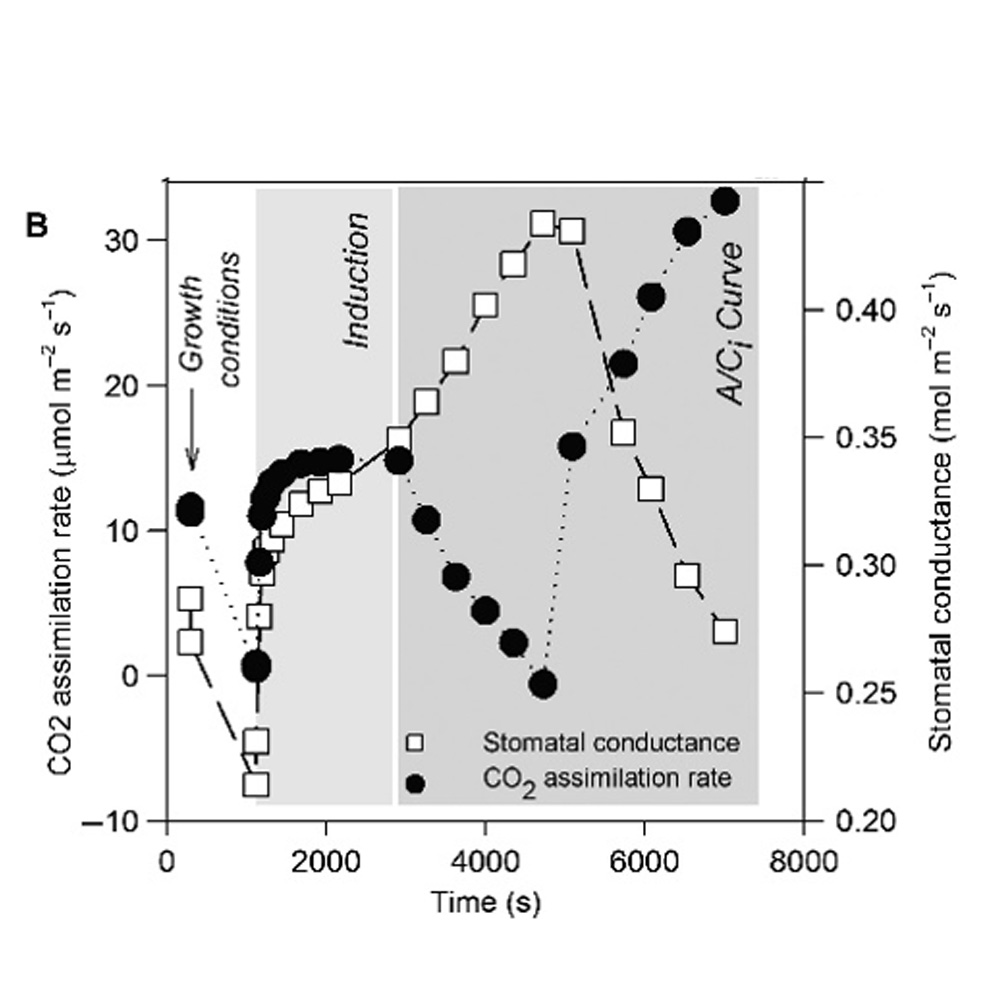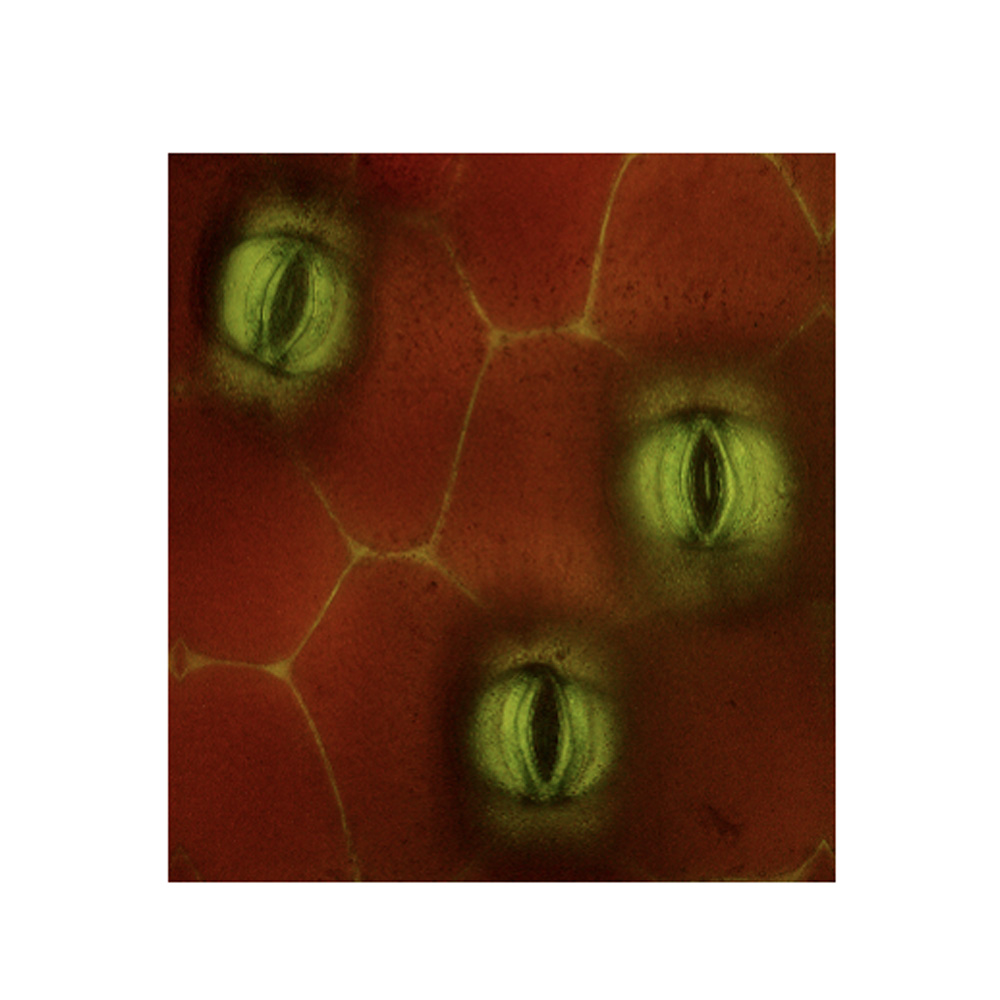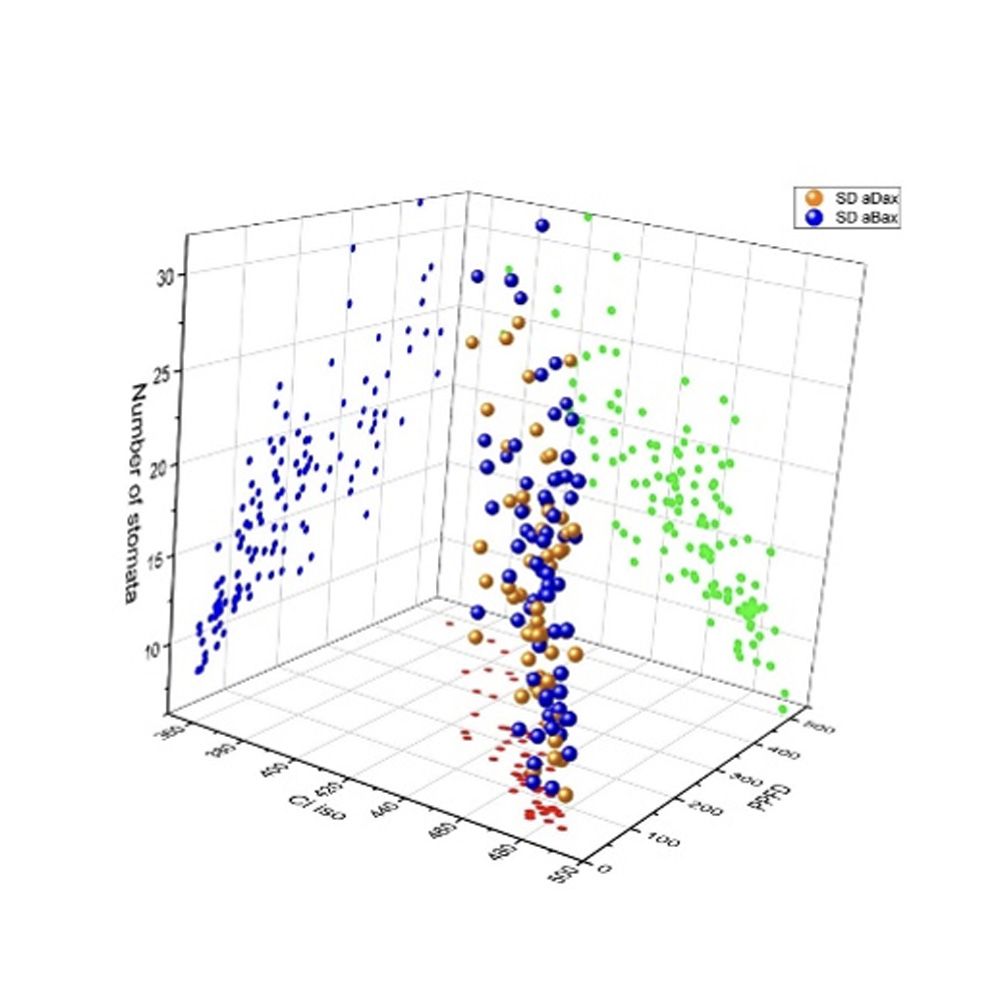The research of the Biophysics group deals with the effects of important abiotic environmental factors related to climate change (such as irradiance and spectral composition, air temperature, CO2 concentration) on the assimilatory apparatus of higher plants, ranging from the mechanisms regulating the utilization of incident radiation to the response of photosynthetic activity at the leaf, plant and ecosystem level. Protective and acclimatory processes at the molecular and metabolic level which reduce the damage of the photosynthetic apparatus under adverse environmental conditions are also intensively studied. Main research topics are described in detail below.
The experimental and methodological background of our research (see Laboratories and instrumentation ) is based mainly on the use biophysical techniques of optical spectroscopy for examining the structure and functional state of the assimilatory apparatus and biochemical technigues (especially chromatographic and electrophoretic methods) for the examination of components of the assimilatory apparatus (photosynthetic pigments, secondary metabolites, pigment-protein complexes of thylakoid membranes, etc.).
Understanding photosynthesis in a natural dynamic environment requires knowledge of both long-term (acclimation) and short-term responses of the photosynthetic apparatus, including their interactions. Acclimation of plants to adverse (stressful) environmental conditions includes a number of specific processes that lead to changes in the structure and organization of the photosynthetic apparatus, which enables optimization of its function. We mainly focus on the acclimation response of the photosynthetic apparatus of higher plants to changes in the intensity and spectral quality of radiation or temperature, while this response can be significantly different for different plant species.
Illustrative figures showing the results of different biophysical methods A) chlorophyll fluorescence analysis on dark-adapted leaves B) low-temperature (77 K) chlorophyll fluorescence emission spectra of isolated thylakoid membranes C) separation of thylakoid membrane pigment-protein complexes using native electrophoresis
We are focusing on one of the still unsolved questions of membrane biology, i.e. the role of non-bilayer membrane lipids in plant thylakoid membranes. Although the energization of the thylakoid membrane depends on its organization into a lipid bilayer, approximately 50% of the thylakoid membrane lipids are monogalactosyldiacylglycerol molecules, which are lipids that do not form the bilayer. Specifically, we study the basic properties of lipid polymorphism in plant thylakoid membranes, structural entities related to different lipid phases or their physiological significance. Our results are interpreted within the frameworks of the “Dynamic Exchange Model” of thylakoid membranes, which is based on the coexistence of different lipid phases and their dynamic equilibria responding to changes in the physicochemical environment and physiological processes in the thylakoid membrane of the chloroplast.
Lipid polymorphism in thylakoid membranes detected by 31P-NMR and the “Dynamic Exchange Model” of thylakoid membranes.
The subject of this research is the assessment of the significance, function and contribution of small molecules (metabolites) in acclimation processes leading to increased plant resistance to environmental stress factors (e.g. excessive light, high temperatures, excessive levels of UV-B radiation etc.). We focus primarily on the protective role of phenolic compounds, carotenoids, and tocopherols (as well as of other classes of secondary metabolites). We examine the effects of abiotic environmental factors and their mutual interactions in the context of their ability to regulate the content of protective metabolites in plants. We also monitor the dynamics of production and degradation of these substances in plant material and we also aim to clarify their mutual substitutability in protective processes (especially in regards of suppressing oxidative damage). Marginally, we deal with the molecular mechanisms related to the perception of environmental abiotic cues and the transmission of such signals leading eventually to the modulation of the metabolic pathways and metabolite content. An integral part of this research is also the development of methods for the monitoring of reactive oxygen species (ROS) and of the products of ROS interaction with important biomolecules (DNA, proteins, lipids). The integration of such results reflecting the oxidative pressure and data describing the state of photosynthetic apparatus than allow us to determine the extent of damage of plants on the molecular level and thus indirectly the effectiveness of acclimation mechanisms in which LMWPCs participate.
Differences in metabolic profile of leaf soluble phenolic compounds caused by the acclimation of plants (spring barely – Hordeum vulgare) to light varying in the irradiance (L-low, M-medium, H-high) and spectral quality (R-red, G-green, B-blue light; for abbreviations of compounds see Pech et al. 2022) – left. The effect of plant pre-aclimation to light of different spectral quality on the generetion lipid peroxidation products during short- and long-term excessive light stress (measured by using SPY-LHP fluorescence probe) – right.
We study the effects of external abiotic factors (particularly irradiance, temperature, drought and CO2 concentration) on photosynthetic CO2 assimilation rate and also their effects on photosynthesis from a broader ecophysiological point of view. In this field we focus on changes of diffusional and biochemical limitations of photosynthesis (e.g. stomatal and mesophyll conductance and carboxylation activity of enzyme Rubisco) and how this determine photosynthetic activity, plant productivity and plant tolerance to external environmental stressors. We are looking into this issue also from the perspective of the water availability and water use efficiency of the plants, in that context we are therefore interested in how the number and distribution of stomata on the leaf surface is controlled and how adjusting of permeability of cuticular membrane, which is the main barrier for water loss from the plant, affect plant drought tolerance.
The effect of external environmental factors is studied from the perspective of photosynthetic activity and plant growth. A) Example protocol for measuring photosynthetic assimilation of CO2 and stomatal conductance for water. The measurement provides us information about the current rate of photosynthesis, the carboxylation activity of the Calvin-Benson cycle enzyme, diffusion and biochemical limitations of photosynthesis; B) microscopic analysis of the number and distribution of stomata on the leaf surface indicate the plant’s ability to adapt to current environmental conditions; C) our research is focused on the study of individual environmental factors and their interactions, which are usual in the natural environment.
